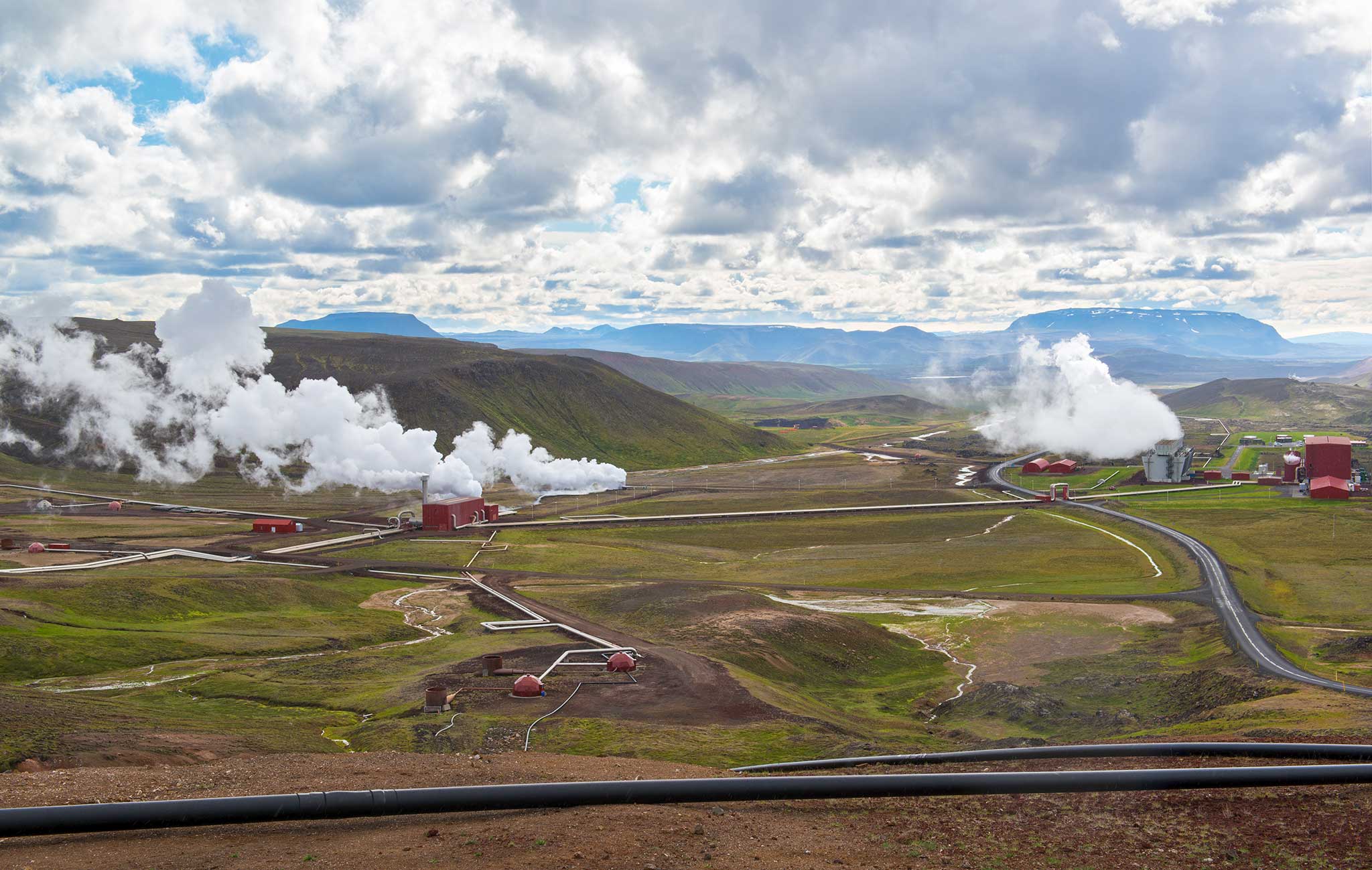Table of Content
A good installer who's knowledgeable about heating and cooling as well as your local geology will be able to make those calculations for you. Read on to understand how geothermal heat pumps work, how much they cost and if they’re a smart investment. Closed-loop systems use a water mixture in the pipe system to transfer heat from the ground to the structure.
The steady 55-degree environment underground allows a geothermal heat pump to outperform an air-source heat pump in cold climates. An air-source heat pump exchanges heat energy with the outdoor air instead of the ground. When temperatures go down to about 30 degrees, air-source heat pumps begin to lose efficiency and heating capacity. Although geothermal or ground source heat pumps have been around since the 1940s, they have only become common in the past few decades. Some Canadian provinces, such as Ontario, are incorporating geothermal heat pumps into their climate change plans with the goal of eliminating all combustion heating by 2050.
Earth Connection
This type of approach will encourage businesses to invest in building the carbon friendly infrastructure needed to achieve the carbon reduction targets our government is calling for. Find more about green home construction and reapthe benefits of a free Ecohome Network Membership here. State and federal policies are likely to spur developers to tap some of this potential in the next few years. The Geothermal Energy Association estimates that 125 projects now under development around the country could provide up to 2,500 megawatts of new capacity . Say goodbye to frequent maintenance visits, service calls, and heating deliveries. No more negotiating annual delivery contracts or wondering how the news cycle will affect your heating bill.

Approximately 50% of all the sun’s energy that reaches the Earth is absorbed by its surface. Instead of using large drill rigs like those used to bore artesian wells, Dandelion began experimenting with smaller, more efficient drills that make one or two deep holes just a few inches wide. Unfortunately, many people have never heard of home geothermal, or they don’t understand it.
Can I see details about the heating and domestic hot water systems of the Edelweiss house?
When the fluid is pumped down into the ground loop, heat will naturally be transferred from the hot fluid into the cooler ground. Horizontal ground source heat pump systems can be cheaper to install but require a significant amount of space, and it does some pretty intense damage to any ecosystems that lay in its intended path. For a given length of pipe, horizontal loop systems are a bit less efficient than vertical loop systems, as they can be more easily affected by surface temperatures.

This tubing acts as a heat exchanger between the fluid in the tubes and the ground. The tubing is configured in various patterns and depths based on available land area and the composition of the soil below ground. Horizontal Ground Loopsare considered the most common and cost-effective residential heating options, provided the home owner has enough room to install them. Pipes in a horizontal ground loop are placed in trenches that can range from 100 to 400 feet in length. A heat distribution subsystem—Conventional ductwork is generally used to distribute heated or cooled air from the geothermal heat pump throughout the building. Heat pumps move heat from one place to another using electricity.
Heat pump water heater with exterior compressor
Wages may also depend on other factors such as whether you are required to travel or work extra hours to meet deadlines. Those involved in processing geothermal energy will work on designing facilities from an office to overseeing on-site developments and processes. Other engineers will travel around the world to locate suitable geothermal sites before developing strategies to access the resources.
Low-temperature geothermal energy is derived from geothermal fluid found in the ground at temperatures of 150ºC (300ºF) or less. These resources are typically utilized in direct-use applications, such as heating buildings, but can also be used to produce electricity through binary cycle geothermal processes. Oil and gas fields already under production represent a large potential source of this type of geothermal energy. In some cases, exploiting these geothermal resources could even enhance the extraction of the oil and gas. Because of the rapid development of the area in the 1980s, and the technology used, the steam resource has been declining since 1988. The plants at the Geysers use an evaporative water-cooling process to create a vacuum that pulls the steam through the turbine, producing power more efficiently.
With closed-loop systems, such as the binary cycle system, there are no emissions and everything brought to the surface is returned underground. Once this heated water is forced to the surface, it is a relatively simple matter to capture that steam and use it to drive electric generators. Geothermal power plants drill their own holes into the rock to more effectively capture the steam. If you’re interested in enjoying the benefits of a geothermal heating and cooling system in your home, Home Climates has a team of experts that can get the job done. We can help you decide on which type of geothermal system is best for your property. A system that is too small simply cannot transfer enough heat from underground to deal with the cold temperatures at the surface.
Conventional ductwork is generally used to distribute heated or cooled air from the geothermal heat pump throughout the building. For hydronic heating and cooling systems, radiant panels and respective tubing are used as the heat exchanger. The challenge with geothermal heating and cooling is not he technology, it's the cost of giving away the energy for free. If individual home owners had to build gas pipelines from their homes to the source of the gas - which they would then get for free - it would be too expensive as well. You can save up to 80% each year on hot water, heating and cooling by switching from a traditional HVAC to a geothermal heat pump. Geothermal engineering is all about accessing and using geothermal energy, whether for producing electricity or for heating and cooling applications.
The heat is then absorbed by the water and circulated underground where the heat is rejected to the cooler ground. Remember the 2ndlaw of thermodynamics states that heat moves from a warmer to a cooler item. The water and refrigerant never come in contact with each other. For a complete understanding of the refrigerant cycle see our other video. In rural areas where a building is close enough to a water source of acceptable dimensions, aPond or Lake Loopcan be set up.

Despite their many advantages, installing a conventional geothermal system for a typical home used to cost up to $50,000 or more. You have probably experienced this phenomenon at home without even realizing it. When you go into your basement on a hot day, it’s nice and cool down there because the earth on the other side of your foundation is, you guessed it, 55 degrees. Thank you to the Ecohome author for the informative air condition installation guide. The post and the comments are very rich with information that help me to do my research. If the government of Ontario stops screwing up our electricity system,then geothermal is a great idea, and really pays off.
In the summer, heat is taken from the home into the liquid which carries it into the ground to cool. Simple refrigerator technology coupled with the stable temperature of the Earth provides quiet, reliable, and energy efficient heating and cooling systems for today’s discerning homeowners. Ground Source Heat Pumps – Ground Temperatures and Loop DepthThe use of geothermal heat pump systems takes advantage of the earths relatively constant temperature beneath the surface based on location and height. The earth maintains a ground temperature range from 45°F (7°C) to 75°F (21°C). Taking advantage of this natural heat source is what gives the Geothermal Heat Pump greater efficiencies than a standard heat pump.

But this process loses 60 to 80 percent of the steam to the air, without re-injecting it underground. While the steam pressure may be declining, the rocks underground are still hot. The project came online in 2003, and in 2008 provided enough additional electricity for approximately 100,000 homes .

No comments:
Post a Comment